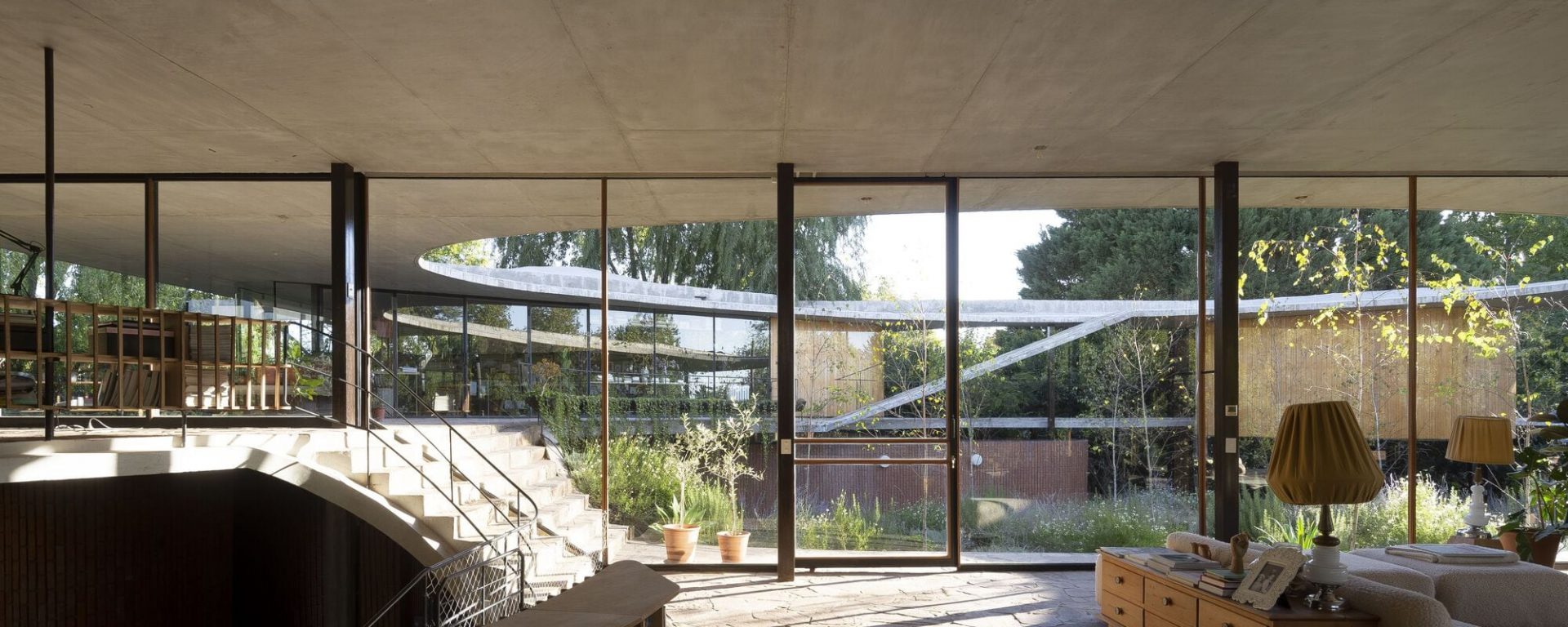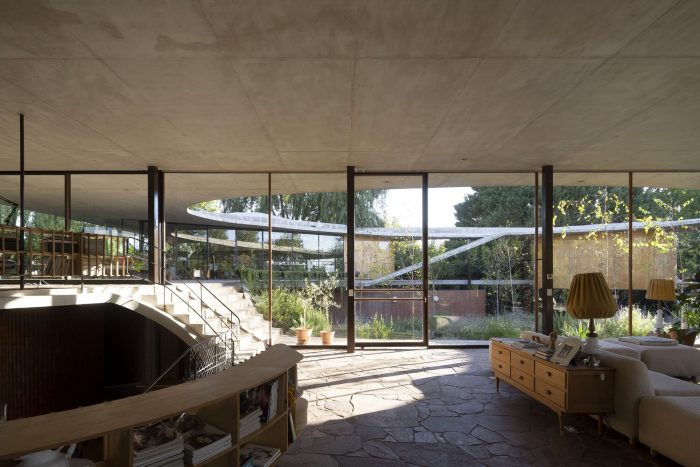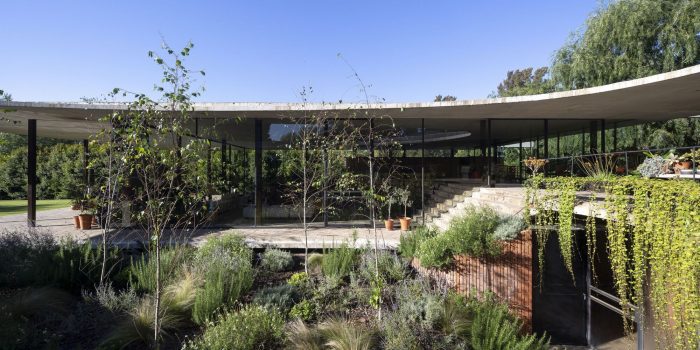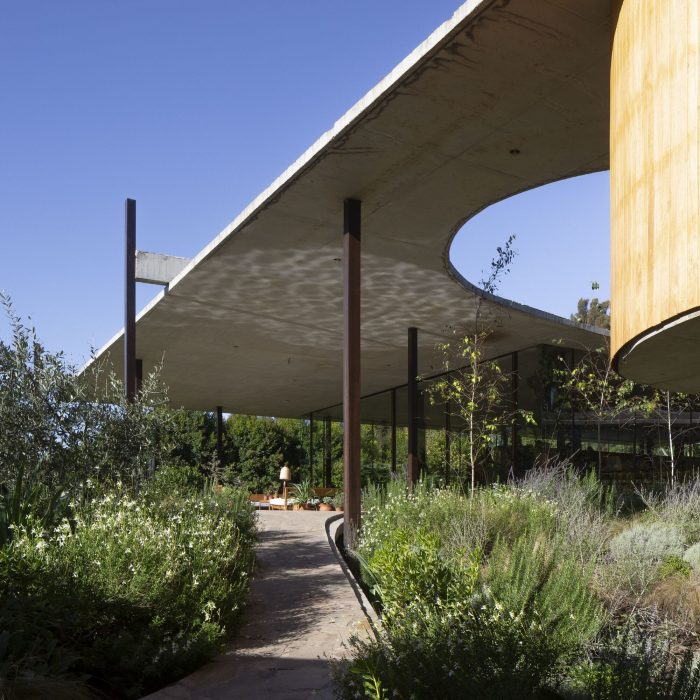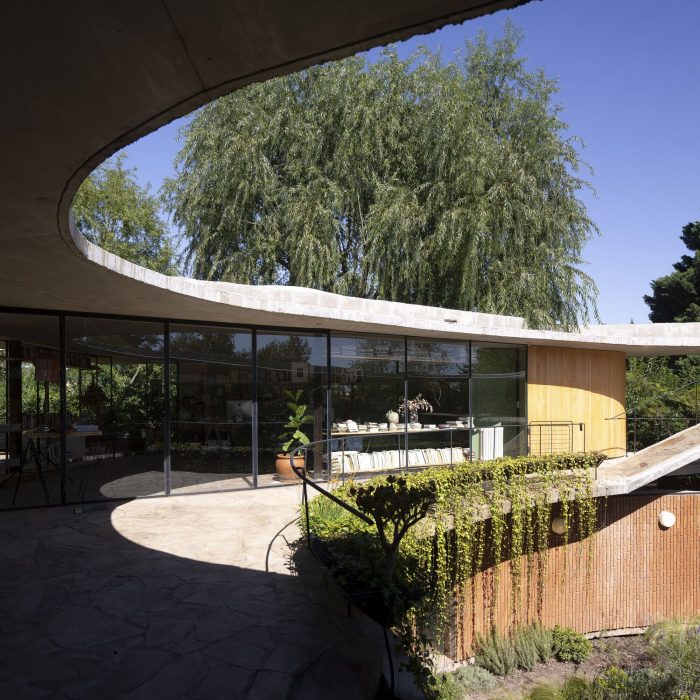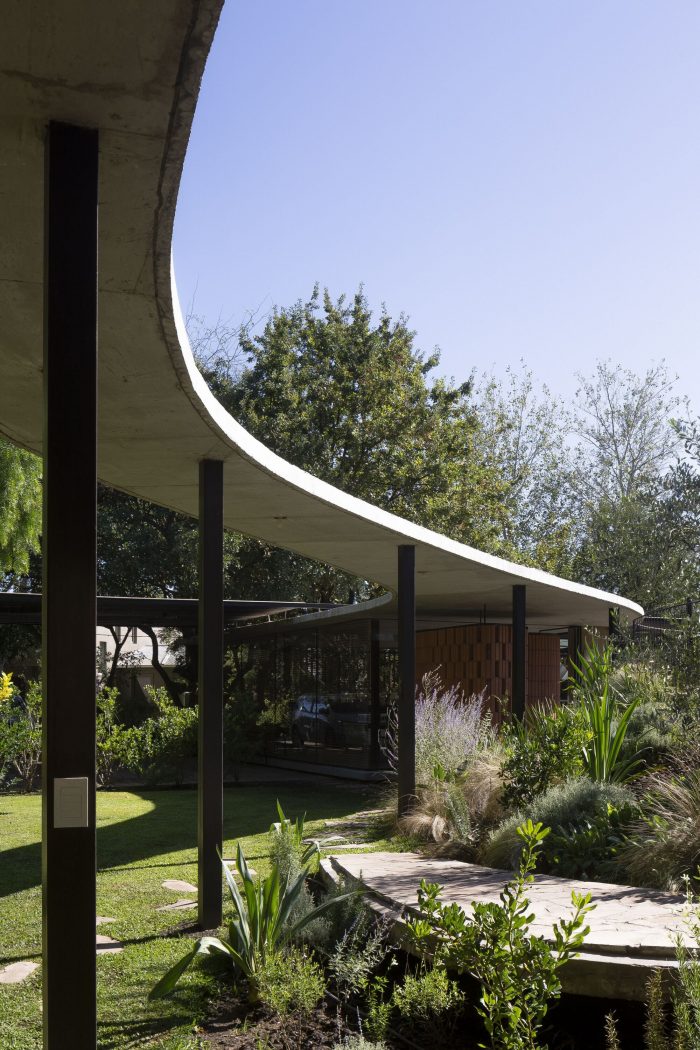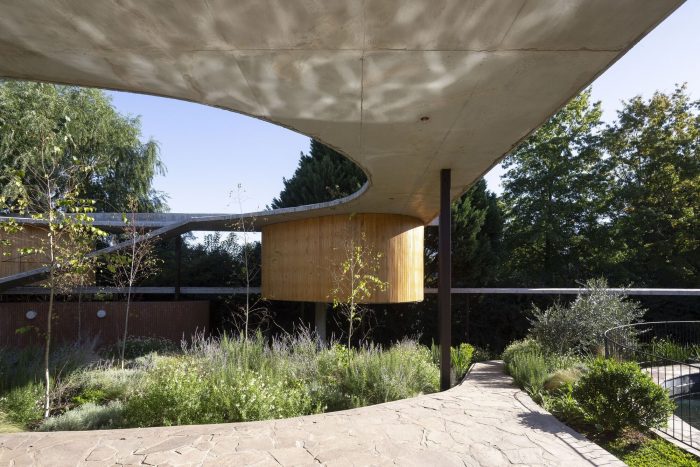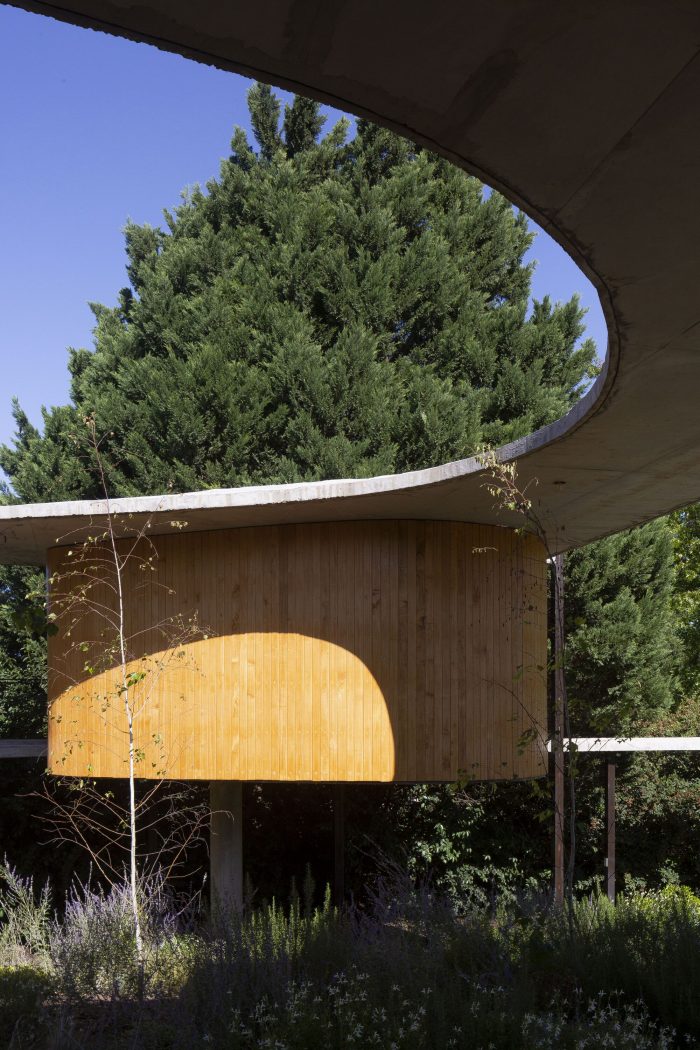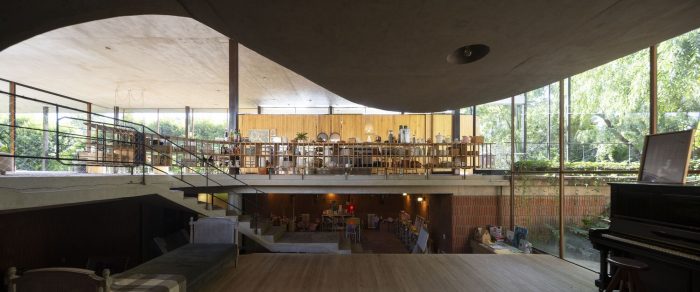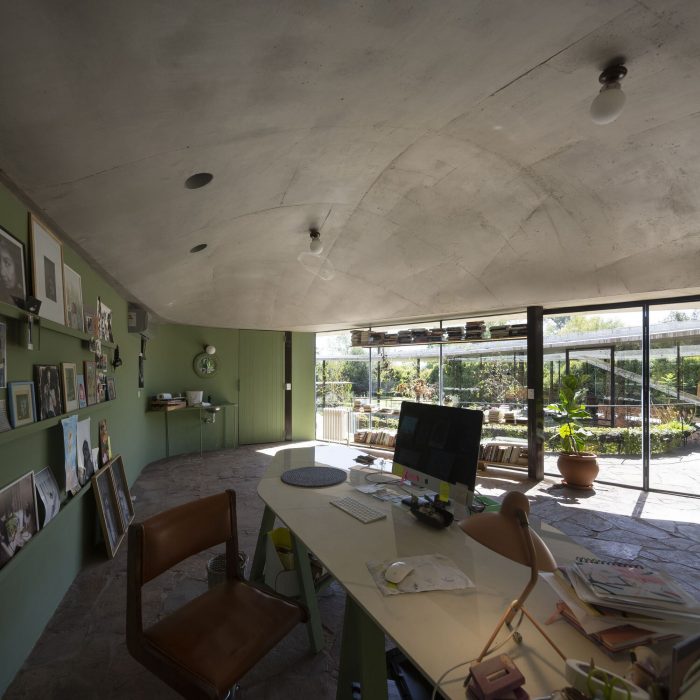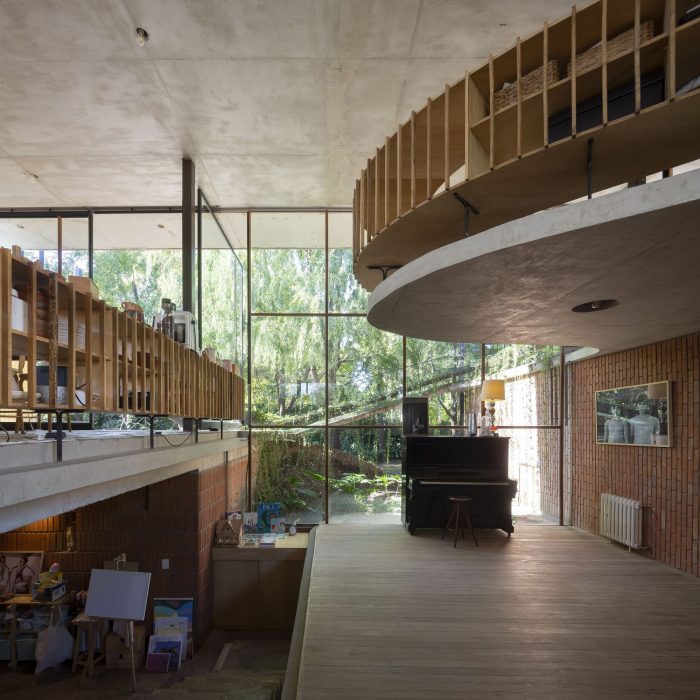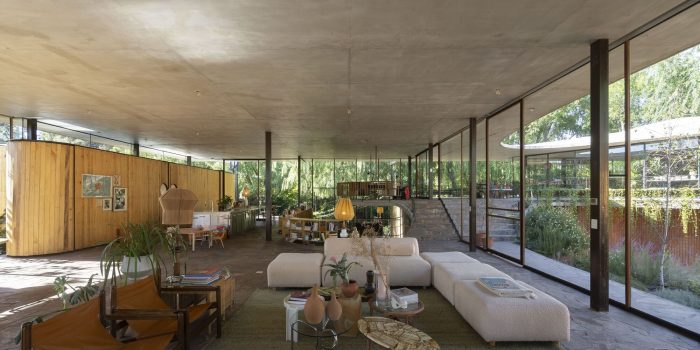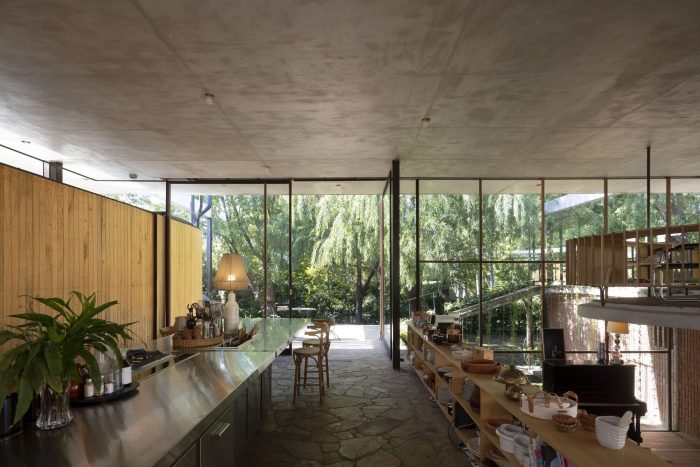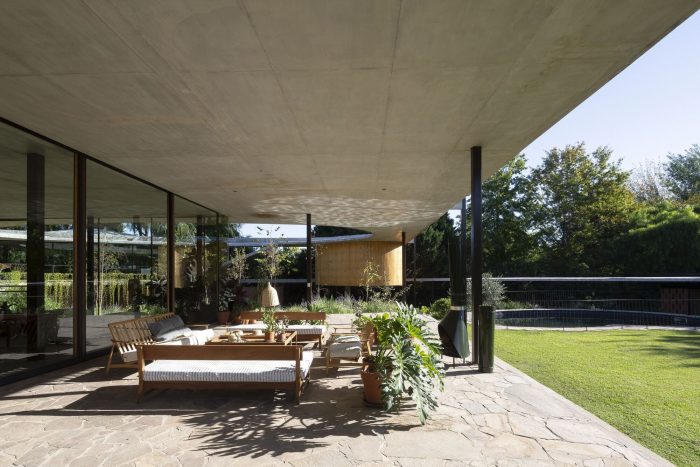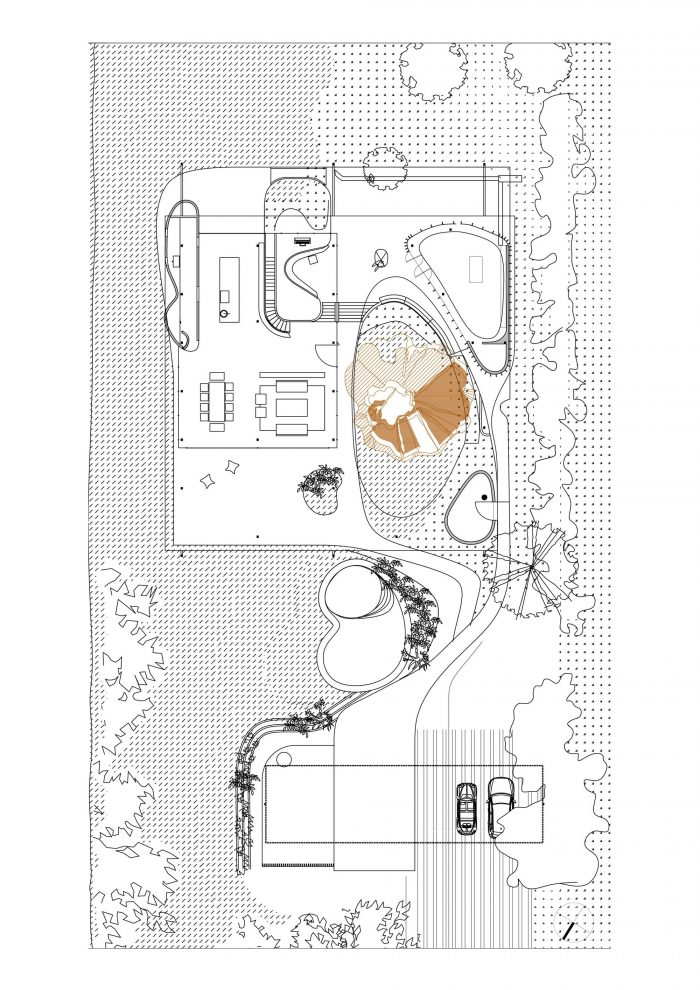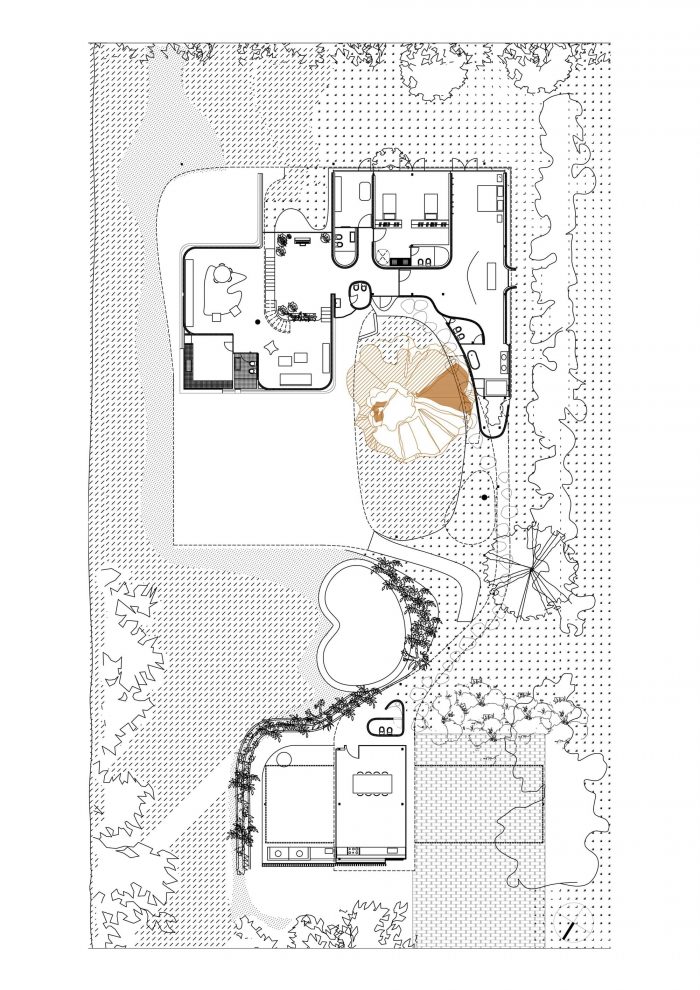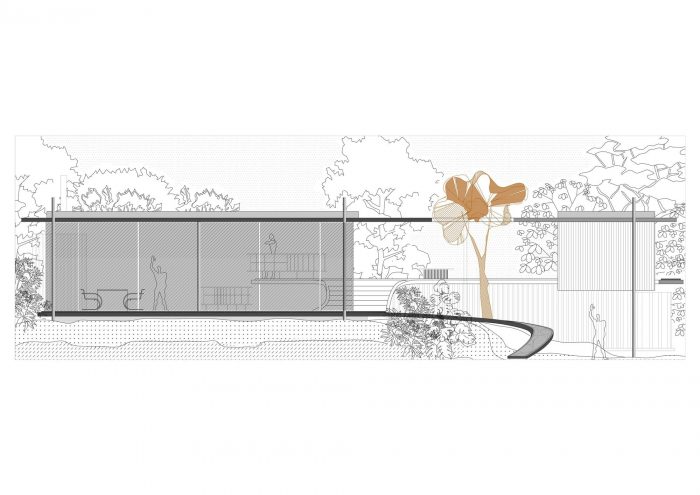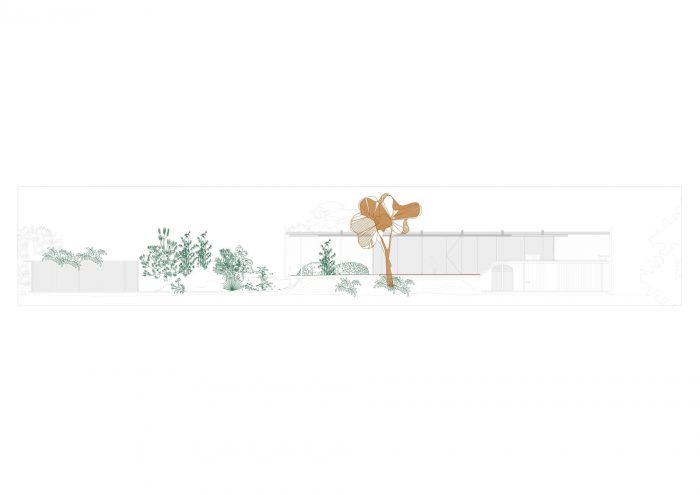丽塔是一系列有机房屋中的第2号,如Chloé、Borja和Filippa。所有的目标都是一样的,都是为了发展一种练习,在于具体化和重复一系列的项目操作,在工作室我们称之为 “住房宣言”。
– 内部庭院
– 交叉的照明和通风
– 空间关系
– 栏杆家具
– 本土材料
– 建筑巡礼
通往屋顶的通道
Rita is No. 2 in a series of organic houses, such as Chloé, Borja, and Filippa. All with the same objective, to develop an exercise that lies in materializing and repeating a set of project operations that in the studio we call “Housing Manifesto”.
– Internal courtyard
– Crossed lighting and ventilation
– Spatial relations
– Railing furniture
– Indigenous materials
– Architectural Tour
Access to the roof
该土地有2500米,位于布宜诺斯艾利斯郊区的一个私人公寓内。在房子的位置上,尊重了这个以老化树木为主的场地的全部内容。
The land has 2,500 m and is located in a private condominium on the outskirts of Buenos Aires. The site where aged trees predominate was respected in its entirety for the location of the house.
作品的轴线是一个内部天井,周围有斜坡,连接着有盖的空间和其他半有盖的空间,在居住的空间之间产生了一个流动的过渡路线。
The axis of the work is an internal patio surrounded by ramps that connect covered spaces with other semi-covered ones, generating a fluid transition route between the spaces that are inhabited.
房子被植入土地的底部,以接受全天的阳光。我们决定颠覆传统的决策,将私人项目放在底层,社会项目放在上层。我们用一个私人的、平静的、密封的空间来描述房间的特点,这让人有一种插入森林的感觉。而客厅被抬高到树梢的高度,全天产生交叉通风和照明,允许从这个空间进入整个房子。
The house was implanted at the bottom of the land, to receive sun throughout the day. We decided to invert the traditional decision-making by locating the private program on the ground floor and the social program on the upper floor. We characterize the rooms with a private, calm, and sealed space, which gives the sensation of being inserted in a forest. While the living room is raised to be at the height of the treetops and generates cross ventilation and lighting throughout the day, allowing access from this space to the entire house.
在第二层,有一个有独立通道的书房和一个供客人使用的房间,使参观达到高潮。建筑是脱胎换骨的,缺乏矫揉造作的材料,所有的奢华都是由周围的大自然赋予的。所用材料中最主要的是:混凝土、砖和木材。
On the second level, there is a study with independent access and a room for guests, culminating the tour. The construction is stripped and lacks pretentious materials, all the luxury is given by the nature that surrounds it. Predominate among the materials used: concrete, brick, and wood.
Architects: Estudio Fernandez Renati
Area : 692 m²
Year : 2021
Photographs :Javier Agustín Rojas
Manufacturers : Armaferro, Castro Hnos., Cerart, Chacabuco, Cocinas de Otro Tiempo, Dercole, Fenomix, Martoreli, Muc, Robinet
Lead Architect : Alejo Fernandez
Design Collaborators : Héctor Fernandez Renati, Gimena Caffo
City : Ituzaingó
Country : Argentina

